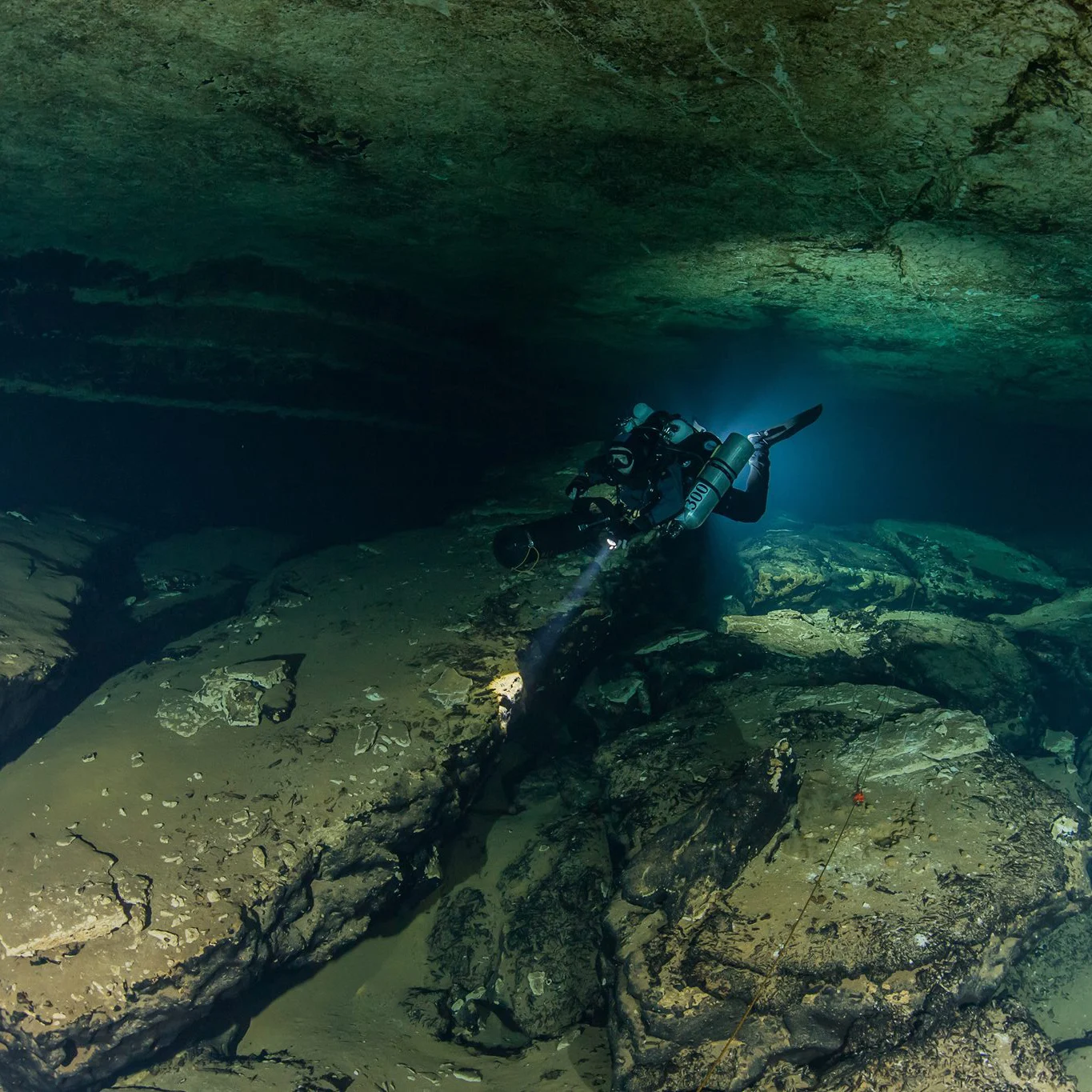Eagle’s Nest Horror: The Final Dive of James D. Woodall


| Incident Location (Country, Region, Cave) | Diver Full Names (Deceased) |
|---|---|
| United States; Florida; Eagle’s Nest | James D. Woodall |
In 2004, two divers, James D. Woodall (39) and Gregory S. Snowden (34), traveled to Florida for the Diving Equipment and Marketing Association show in Orlando. Both men were experienced in open-water diving, but neither held cave-diving certifications.
Still, curiosity and confidence pulled them toward one of the most infamous cave systems in the world: Eagle’s Nest. Known as the “Mount Everest of cave diving,” it has lured countless divers into its maze of tunnels, chambers, and deadly depths.
They carried advanced diving gear:
- Rebreathers filled with an 18/30 gas mix
- Backup diving tanks for emergencies
- Full diving suits
- Diving masks sealed tight against the cold black water
- Diving computers ready to monitor their progress
But gear alone doesn’t guarantee safety in a place like Eagle’s Nest.
The Long Swim In
The pair entered the cave system and swam nearly 1,000 feet upstream. Unlike some divers who used scooters to cover distance, Woodall and Snowden relied only on their fins and stamina.
The cave was vast, with chambers so large they seemed endless. Among them was the Super Room, a wide, haunting space that has tested divers for decades. It was here that things began to unravel.
Snowden later recalled that Woodall showed sudden agitation. Something was wrong, but it wasn’t clear what.
Trouble at 270 Feet
At about 500 feet from the entrance, still trapped deep in the cave, Woodall’s breathing equipment began to fail. They were at a staggering 270 feet depth, where stress, pressure, and the silent pull of the cave can overwhelm even skilled divers.
Snowden reacted fast. He offered his bailout gas not once, but three separate times. Each time, Woodall shook his head or pushed it away. It was as if he was too panicked—or too disoriented—to accept the help.
“He wouldn’t take it. He just refused.”
Moments later, the inevitable happened. Woodall’s body gave out. He passed out underwater, sinking into the cold darkness of the Super Room.
Too Heavy to Save
Snowden, horrified, tried to act. But Woodall was a very large man, and dragging him through hundreds of feet of cave tunnels while swimming was impossible. There were no scooters, no easy way out.
Snowden had to make a choice: stay and risk both their lives, or leave the body behind to save himself.
He swam toward the exit, his diving computer ticking away the time, each second heavy with dread.
Rules Broken in the Depths
Cave diving has a simple framework known as the Five Rules of Safety. These rules have saved countless lives, but when ignored, they almost always lead to tragedy.
James D. Woodall and Gregory S. Snowden failed to follow two critical rules:
- No cave-diving training – Both men were skilled in open water, but had no certifications or formal training for cave systems.
- Improper gas mix for depth – At nearly 270 feet, the gas they carried was not safe.
Even with advanced diving gear, diving tanks, diving mask, and diving suits, ignoring these rules left them vulnerable to forces they couldn’t control.
The Rebreather Mix
The divers were using closed-circuit rebreathers with a diluent mixture of 18/30:
- 18% oxygen
- 30% helium
- 52% nitrogen
This mix was designed for shallower dives. At 270 feet, it was unstable and dangerous. Most technical divers would consider it far too high in oxygen and far too low in helium for such depth.
Here is how the risks stacked up:
| Gas Mix Issue | Possible Effect at 270 ft |
|---|---|
| Too much oxygen | Risk of oxygen toxicity (convulsions, unconsciousness) |
| Too little helium | Increased nitrogen narcosis (confusion, poor judgment) |
| High nitrogen load | Extreme disorientation and panic |
| Rebreather scrubber overload | Risk of CO₂ buildup, leading to suffocation |
Symptoms in the Super Room
The signs described by Snowden matched what many experts later concluded:
- Nitrogen narcosis: causing Woodall’s agitation and refusal to accept help.
- Oxygen toxicity: possible seizures or loss of motor control.
- CO₂ buildup: the rebreather’s scrubber may have stopped filtering carbon dioxide effectively, pushing Woodall into distress.
Snowden tried to hand off his bailout gas three times, but Woodall refused every attempt. Whether it was confusion, panic, or a toxic reaction, the cave had already sealed his fate.
The Final Descent
With his diving computer flashing warnings and his buddy sinking into the blackness, Snowden had no chance to pull Woodall out. The body was too heavy, the distance too far.
The cave system of Eagle’s Nest had claimed another life—reminding divers everywhere that even the best diving gear cannot forgive the breaking of fundamental safety rules.
